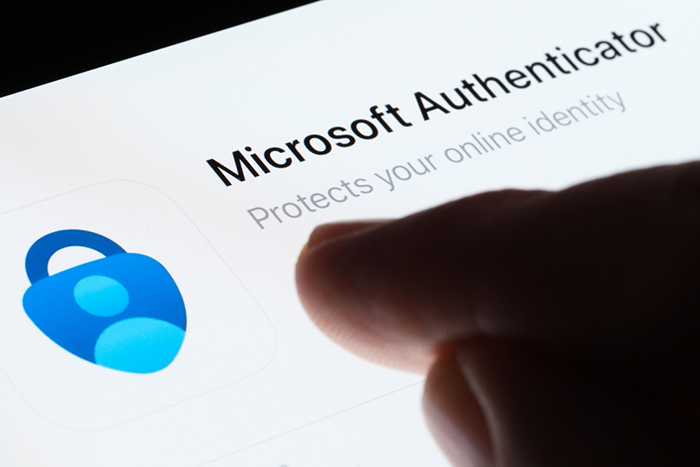
A Guide To IDAM
Are you a business owner concerned about the security of your sensitive information in today’s technology-driven era? If so, this is for you. With data breaches and unauthorised access on the rise in Australia, it’s vital to prioritise the protection of your networks and data.
Identity and Access Management (IDAM) can be the saving grace of your business.
What Is Identity And Access Management (IDAM)?
Identity and Access Management (IDAM) is a comprehensive framework of policies, technologies, and processes that organisations use to manage and control user identities and their access to resources, systems, applications and data.

What Is An Example Of Identity And Access Management?
An example of IDAM is a company that provides employees with unique login credentials and access permissions to various systems and resources based on their roles within the business.
This is a feature commonly used in Microsoft Sharepoint where users are assigned different access permissions to files. This ensures that employees have appropriate access to the necessary tools and data while limiting access to more sensitive information.
Implementing IDAM Involves Several Key Steps
By implementing an effective IDAM strategy, you can protect your business against potential security risks and ensure compliance with the ever-changing landscape of laws and regulations. There are a few recommended steps to follow:
1. Assessment & Planning
Your business should start by conducting a thorough assessment of its current identity and access management landscape. This includes identifying potential vulnerabilities, areas where IDAM will be required and defining your goals and requirements.
2. Design & Architecture
Based on the assessment, you’ll need to design an IDAM system that aligns with your specific needs. This includes defining roles, access policies, and security protocols.
3. Technology Selection
Choose an appropriate IDAM solution that meets your requirements. This may include user provisioning systems, access control mechanisms, authentication and authorization solutions, and identity governance tools.
4. Integration & Deployment
Integrate the chosen IDAM solutions into your existing IT infrastructure and deploy them across the business. This involves configuring user directories, establishing secure authentication mechanisms, and implementing access controls. A smart move would be to get your IT company to manage this. You don’t want to run into compatibility issues.
5. Testing & Evaluation
Thoroughly test the IDAM system to ensure its effectiveness, security, and scalability. Conduct regular audits and vulnerability assessments to identify any weaknesses.
6. Monitoring & Maintenance
Once implemented, the IDAM system requires ongoing monitoring, maintenance, and updates to adapt to evolving threats, regulatory changes, and organisational needs.
IDAM Best Practices
To ensure the success of an IDAM implementation, your business should adhere to the following best practices.
These best practices are utilised by businesses of all sizes and across various industries. They are primarily used by IT teams, security professionals, and compliance officers responsible for designing, implementing, and managing identity and access management solutions.
1. Role-Based Access Control (RBAC)
Implement RBAC to define roles and assign access privileges based on job responsibilities, reducing the risk of unauthorised access.
2. Least Privilege Principle
Grant your users the minimum privileges necessary to perform their tasks, minimising the potential impact of compromised credentials.
3. Multi-Factor Authentication (MFA)
Enforce MFA to enhance security by requiring additional verification factors, such as biometrics, SMS codes, or hardware tokens.
4. Regular Access Reviews
How often have you checked the ‘users’ section of software in your business and seen users there that no longer work with you? You should schedule periodic access reviews to validate user access rights, ensuring that they are up-to-date and align with the principle of least privilege.
5. Strong Password Policies
Implement password complexity requirements and enforce regular password updates to enhance your authentication security.
Laws Behind Identity And Access Management
In Australia, several laws and regulations pertain to identity and access management (IDAM) and the protection of sensitive data.
Telecommunications Act 1997
This law regulates the privacy and security of telecommunications networks and services in Australia. It includes provisions related to access controls and the protection of customer information.
Privacy Act 1988
This law governs the collection, use, and disclosure of personal information by organisations. It outlines the requirements for handling personal data, including the need for appropriate access controls and security measures.
Australian Privacy Principles (APPs)
These principles, outlined in Schedule 1 of the Privacy Act, provide guidelines for the handling of personal information by both government agencies and private sector organisations. Compliance with the APPs involves implementing suitable access controls and identity verification mechanisms.
Financial Sector (Collection of Data) Act 2001
This act regulates the collection and use of financial data by authorised deposit-taking institutions (ADIs). Ensuring appropriate IDAM practices is essential for securing financial data and preventing unauthorised access.
My Health Records Act 2012
This legislation governs the creation, management, and access to the My Health Record system, an electronic summary of an individual’s health information in Australia. It includes provisions for privacy and security, requiring appropriate IDAM measures to protect health records.
IDAM Experts
As you can tell, implementing appropriate IDAM policies within your business is not that straightforward.
As managed IT service specialists in Brisbane, we can help you design and implement a system that makes sense for your business. Contact us today to book a free consultation.
FAQs
IAM and IDAM are acronyms for Identity and Access Management and can be used interchangeably . Both terms refer to the framework, practices, and technologies involved in managing and controlling access to systems, applications, and resources within an organisation.
IAM tools are used to manage user identities, access controls, and security protocols within an organisation. They enable businesses to streamline user provisioning, enforce authentication mechanisms, define access policies, and monitor user activities. In short, IAM tools facilitate efficient and secure management of user identities and their access to systems, applications, and data.
IAM works by centralising the management of user identities and access controls within an organisation. It involves the following steps:
- User Registration: Users are registered and provided with unique identities.
- Authentication: Users authenticate their identities through various methods such as passwords, biometrics, or multi-factor authentication.
- Authorisation: The IAM system verifies user access privileges based on predefined roles and permissions.
- Access Control: Access controls are enforced to ensure users can only access authorised resources.
- Audit and Monitoring: IAM systems track and log user activities for auditing and monitoring purposes.
IAM Location plays a vital role in effective identity and access management strategies.
- Geographical Context: IAM Location involves considering the physical locations or regions where identity and access management processes are implemented, ensuring that security controls align with your local regulations and compliance requirements.
- Data Sovereignty: It takes into account data residency and sovereignty concerns, ensuring that your user identities and access privileges are managed in a manner that adheres to specific data protection and privacy laws within a given jurisdiction.
- Network Infrastructure: IAM Location considers the network infrastructure and connectivity across different locations, enabling your business to implement access controls, authentication mechanisms, and security measures that are tailored to the specific network environment.
- Remote Access: It addresses the challenges associated with remote access scenarios, providing secure and authenticated access to resources for your employees, contractors, or partners who are working from different locations or outside traditional network boundaries.
- Cloud and Hybrid Environments: It extends to cloud-based or hybrid environments, where identity and access management solutions are deployed across multiple cloud providers or on-premises infrastructure. IAM Location ensures consistent access controls and centralised identity management regardless of your deployment model.









